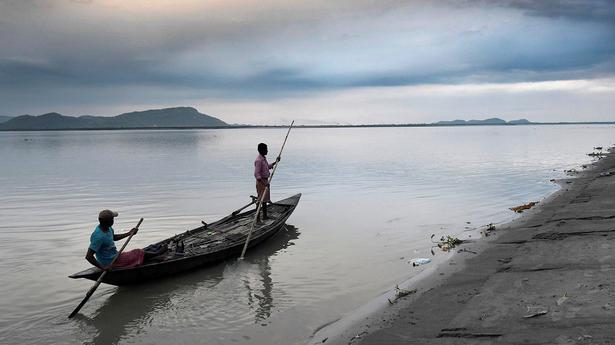The story so far: Bangladesh Prime Minister Sheikh Hasina offered India the use of the Chittagong Port when External Affairs Minister S. Jaishankar called on her in Dhaka last month for an invite to New Delhi. Ms. Hasina said the port would be of benefit to India’s northeastern States, particularly Assam and Tripura. The two other northeastern States bordering Bangladesh — Meghalaya and Mizoram — could also benefit from access to the port.
Also read | Better transport links a win-win for India, Bangladesh: World Bank
How did Partition affect business in the Northeast?
India’s Northeast had easy access to the seaports, specifically Chittagong, in present-day Bangladesh via the Brahmaputra and Barak River systems before independence. The Partition in 1947 did not immediately affect the transportation of tea, timber, coal and oil through these rivers and local-level border trade, helping maintain undivided Assam’s status as the State with the highest per capita income till the early 1950s. But the volume of trade began dipping with the souring of ties between India and Pakistan — Bangladesh was East Pakistan then — before the 1965 war cut the Northeast off. The movement of goods through the ‘chicken’s neck’, a narrow strip in West Bengal, became a costlier alternative for the region after access to the river and land routes through East Pakistan was denied.
Did things change after Bangladesh was created?
The creation of Bangladesh with India’s help in 1971 did not translate into the revival of the traditional river and land trade and communication routes for the Northeast. A degree of mistrust between the two countries, primarily because of the ‘Bangladeshi’ issue and camps established by myriad Northeast extremist groups in Bangladesh, did not help matters. Besides, the two countries did not look at trade and commerce opportunities more closely. The scenario began to change when Sheikh Hasina’s Awami League government took charge in 2009 and the mistrust lessened after the dispute-ending land boundary agreement was signed in 2015. The two countries undertook efforts to improve capacity across waterways, roadways and railroads. From a bus service between Agartala and Kolkata via Dhaka to the movement of cargo on barges, trial runs and trans-shipments have been successfully conducted.
What does the Bangladesh PM’s offer mean?
The Northeast has been the key to the increase in bilateral engagements between India and Bangladesh in the last five years. India’s ‘Act East’ policy that focuses on the region and a new sense of cooperation between the two countries can help the Northeast, specifically four States, explore the potential of economic activities optimally. These States — Assam, Meghalaya, Tripura and Mizoram — share a 1,879 km border with Bangladesh. With a special focus on railways and waterways, many of the pre-Partition trade routes are being revived. Most of these roads lead to Chittagong port, which has historically been the largest and the most convenient for trade and commerce for the region. The importance of this port made the British administrators build the Assam-Bengal Railway route to ship goods from the Chittagong port to the remotest parts of the region such as the now-defunct Lekhapani station near the Arunachal Pradesh-Assam border.
Is there any action on the ground?
The need for connectivity between India’s ‘mainland’ and the Northeast via Bangladesh through a multi-modal approach has been felt for a long time. It began translating into action on the ground in the last five years following the assessment that reopening the pre-Partition trade routes would reduce the cost and time of transportation for the Northeast and generate revenue for Bangladesh. India has been working on infrastructure on either side of the border. In March 2021, the Prime Ministers of the two countries inaugurated the Maitri Setu, a bridge built over the Feni River, which has reduced the distance between Sabroom in southern Tripura and the Chittagong port to just 111 km. The government is working on a multi-modal transit hub at Sabroom inclusive of road and rail connectivity that can help goods reach the Chittagong port in a few hours. Road connectivity in Meghalaya’s Dawki, southern Assam’s Sutarkandi and Tripura’s Akhaura linking eastern and south-eastern Bangladesh is also being improved. Mizoram is keen on bridges across the Khawthlangtuipui river (Karnaphuli in Bangladesh) for faster access to the Chittagong port. Apart from the India-Bangladesh Protocol Route involving the Brahmaputra, cargo ships from Bangladesh have reached Tripura through the Gomati River and Assam’s Karimganj via the Kushiara River.






